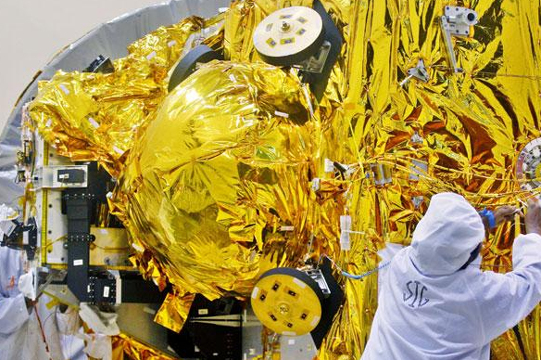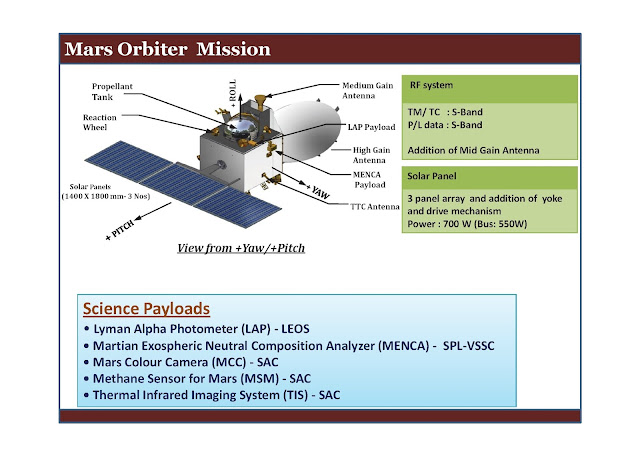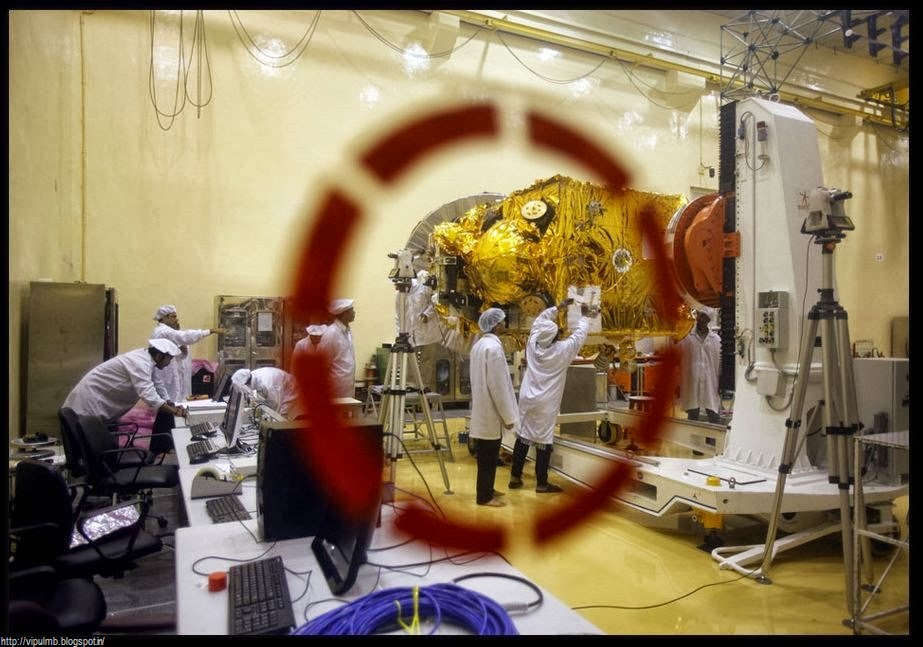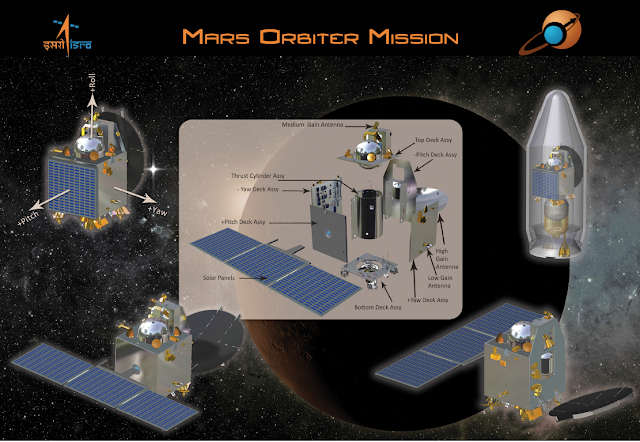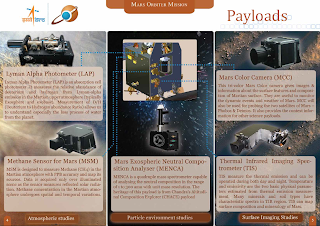Srinivas
ELITE MEMBER

- Joined
- Sep 20, 2009
- Messages
- 12,455
- Reaction score
- -26
- Country
- Location
Mars Orbiter Mission leaves for launch centre

At the crack of dawn on Wednesday, the Mars orbiter spacecraft ceremoniously rolled out of its nest here and took the first baby step of its 400-million-km journey. But before its grand voyage, it is first headed for the Sriharikota launch centre in coastal Andhra Pradesh.
Amidst chants of prayer and loads of good wishes and in the presence of large gathering of scientists, ISRO Satellite Centre Director S.K. Shivakumar flagged off the mother of the Indian Space Research Organisation’s ventures — the Mars Orbiter Mission or MOM — at 6 a.m from the second advanced satellite integration and testing campus, ISITE, at Marathahalli.
The spacecraft, sent by road in a safe cocoon, will reach the Satish Dhawan Space Centre at Sriharikota on Thursday afternoon and undergo further tests and checks until its launch, ISRO spokesman Deviprasad Karnik told The Hindu.
‘Satisfying day’
“It has been one satisfying day for our team,” said Mars project director S.Arunan, describing the mission’s kick-off from Bangalore. “We achieved it in a short time [after the project was approved in September 2012] within a tight deadline. Today, all those sleepless months did not matter.”
MOM, carrying five ISRO instruments, is a Rs. 450-crore Indian space dream that is devised to study the atmosphere, surface and chemicals of Mars, just 372 km from the red planet’s surface.
ISRO Chairman K. Radhakrishnan earlier said the scientists aimed to launch the spacecraft from Sriharikota around 4.30 p.m. on October 28. After days of complex manoeuvring, the spacecraft is slated to be slung off Earth’s orbit on November 30 and it will begin its 300-day journey to Mars. It is expected to reach the Martian zone in mid-September 2014 and orbit it for at least six months.
Mars missions become possible once in 26 months based on the positions of Earth and Mars. The National Aeronautics and Space Administration of the U.S. is also sending its MAVEN (Mars Atmosphere and Volatile Evolution) mission on November 18.
In Bangalore, the spacecraft cleared the mechanical solar panel and antenna movements and vibration and acoustic tests, Mr. Karnik said. On reaching Sriharikota, it would go through electrical and other checks. A week ahead of the launch, it would be sent away for being fitted into the launch vehicle. The launcher, PSLV-C25, is an extended XL version, currently being readied for the mission.
As the mission unfolds, Mr. Arunan’s team is bracing itself for many more sleepless nights and nail-biting moments.
Mars Orbiter Mission leaves for launch centre - The Hindu
Now those false flaggers and Chi-bots come here to earn cents and and burn their as$es, please do not respond to them.

At the crack of dawn on Wednesday, the Mars orbiter spacecraft ceremoniously rolled out of its nest here and took the first baby step of its 400-million-km journey. But before its grand voyage, it is first headed for the Sriharikota launch centre in coastal Andhra Pradesh.
Amidst chants of prayer and loads of good wishes and in the presence of large gathering of scientists, ISRO Satellite Centre Director S.K. Shivakumar flagged off the mother of the Indian Space Research Organisation’s ventures — the Mars Orbiter Mission or MOM — at 6 a.m from the second advanced satellite integration and testing campus, ISITE, at Marathahalli.
The spacecraft, sent by road in a safe cocoon, will reach the Satish Dhawan Space Centre at Sriharikota on Thursday afternoon and undergo further tests and checks until its launch, ISRO spokesman Deviprasad Karnik told The Hindu.
‘Satisfying day’
“It has been one satisfying day for our team,” said Mars project director S.Arunan, describing the mission’s kick-off from Bangalore. “We achieved it in a short time [after the project was approved in September 2012] within a tight deadline. Today, all those sleepless months did not matter.”
MOM, carrying five ISRO instruments, is a Rs. 450-crore Indian space dream that is devised to study the atmosphere, surface and chemicals of Mars, just 372 km from the red planet’s surface.
ISRO Chairman K. Radhakrishnan earlier said the scientists aimed to launch the spacecraft from Sriharikota around 4.30 p.m. on October 28. After days of complex manoeuvring, the spacecraft is slated to be slung off Earth’s orbit on November 30 and it will begin its 300-day journey to Mars. It is expected to reach the Martian zone in mid-September 2014 and orbit it for at least six months.
Mars missions become possible once in 26 months based on the positions of Earth and Mars. The National Aeronautics and Space Administration of the U.S. is also sending its MAVEN (Mars Atmosphere and Volatile Evolution) mission on November 18.
In Bangalore, the spacecraft cleared the mechanical solar panel and antenna movements and vibration and acoustic tests, Mr. Karnik said. On reaching Sriharikota, it would go through electrical and other checks. A week ahead of the launch, it would be sent away for being fitted into the launch vehicle. The launcher, PSLV-C25, is an extended XL version, currently being readied for the mission.
As the mission unfolds, Mr. Arunan’s team is bracing itself for many more sleepless nights and nail-biting moments.
Mars Orbiter Mission leaves for launch centre - The Hindu
Now those false flaggers and Chi-bots come here to earn cents and and burn their as$es, please do not respond to them.

